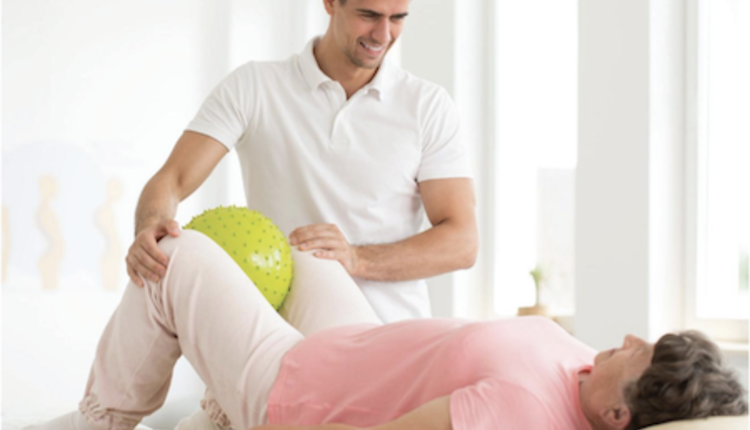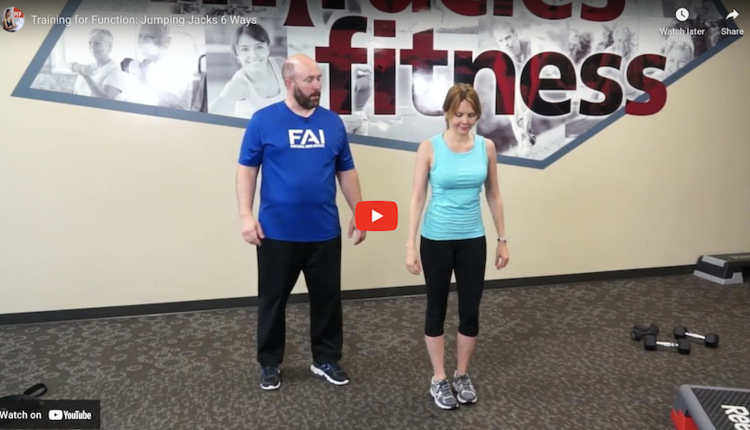Poor posture, musculoskeletal conditions and pain are becoming a leading factor health and fitness professionals need to be aware of when designing exercise programs for their clients. It's estimated by the World Health Organization that 30% of American adults are affected by joint pain, impaired physical function or limitation of movement. Many of the disorders stem from a lack of awareness of posture and body alignment while in a static position or dynamic movement. Fitness professionals can teach their clients to maintain good postural alignment when performing their daily activities and while performing resistance training exercises. Every aspect of life, whether you are sitting, standing, sleeping, walking or performing resistance training exercises, can put you at risk if one is not aware of correct postural alignment.
Posture Correction-Attention to Detail for Every Repetition Performed
In order to reduce the injuries many of your clients live with on a daily basis, learning to correct a client's posture can become a valuable tool for your professional growth and as part of the special programs your facility offers. Assessing posture and correcting alignment requires a fitness professional to be extremely detail-oriented. It requires the professional to analyze their client performing movements from every angle: anterior, posterior, and laterally on both sides to make sure every joint structure from head to toe is in the correct position while the client is performing each individual repetition.
Forward head protrusion, exaggerated kyphotic curve, depressed shoulder blades and internally rotated shoulders are the four areas that will be the most common postural imbalance issues that you can identify in the clients that you train. The following exercises will demonstrate a series of movements that you can establish and assist your clients in achieving better postural alignment.
Exercise #1 - Establishing Correct Alignment for the Glenohumeral Joint
The Glehohumeral (G/H) joint may be abducted at a range from 45 to 80â° angle in relation to the body, based on the amount of G/H misalignment due to excessive internal rotation of G/H joint. If your client has excessive internal rotation you may need to limit shoulder abduction to a 45â° to 60â° angle for the first 2 to 4 weeks until the G/H establishes proper alignment. NOTE: when movement begins, the client's wrist should relax and bend, allowing tension in the forearms to relax as they abduct their shoulders to the defined range of motion (ROM).
Exercise #2 - Dumbbell Lateral Raise-Lateral View
Glehohumeral (G/H) and shoulder position should extend directly in a straight line in the frontal plane when moving from the preparation phase to central phase (mid-point of the repetition). NOTE: elbow should be completely extended and not bent at the elbow joint to reduce strain on collateral ligaments.
Exercise #3 - Standing Row with Exercise Tubing
The standing row is an integrated movement that requires the trainer to analyze not only the movement in the upper body, but confirm that the client is able to maintain proper stabilization of the lower body, emphasizing neutral pelvic alignment and correct hip/knee/ankle position. During the central phase of the exercise, a 90â° angle should be created between the shoulder, elbow, and wrist joints. By properly positioning and creating the 90â° angle and retracting the shoulder blades, the body will be placed in a position that reinforces proper posture that one would want to achieve while sitting at desk using a computer. Based on the number of repetitions, halfway through the set, the client should change foot positions to evenly distribute forces and create balance in the lower body.
Exercise #4 - Body Weight Lunge
The hip joint acts as a major axis point for the kinetic chain moving from the preparatory to central phase. The depth of lunge is determined when the pelvis shifts position in lowering or descending phase. Typically due to upper and lower muscle structure imbalances, the body will begin to compensate and cause the Line of Gravity (LOG) and joint structures to shift position based on one's current postural status.
Exercise #5 - Plank Stabilization on a Stability Ball
This plank stabilization exercise on a stability ball allows for several advantages over performing a plank while resting forearms on the floor with the G/H placed in internal rotation. The majority of individuals do not have the correct G/H, spinal or pelvic alignment to attempt doing a bodyweight plank exercise. First, LOG can be created more easily when using a stability ball to add support for the individual allowing them to retract their shoulder blades, align the shoulder so it is centered and achieve neutral cervical alignment. Second and most importantly, you can accurately align the hand and elbow directly under the shoulder and change the angle to reduce unwanted shoulder flexion. Lastly, this allows the client to reduce additional internal rotation when forearms are commonly pressed into the floor in a diagonal position which creates additional structural issues for the G/H joint, specifically the rotator cuff.
Learning to assess and correct a client's posture in static and dynamic positions will allow you to reverse many musculoskeletal imbalances and reduce the pain levels that many live with everyday. It takes practice, patience and learning which exercises to select when creating programs to correct your client's posture. By focusing on posture assessment and correction, you can help restore proper alignment so that your clients can function better and perform their activities of daily living at a higher level.
Ken Baldwin is a leading international expert on posture analysis/correction, an Assistant Professor for the Undergraduate Degree in Fitness at the State University of New York, and the Executive Director for The National Posture Institute. www.npionline.org











